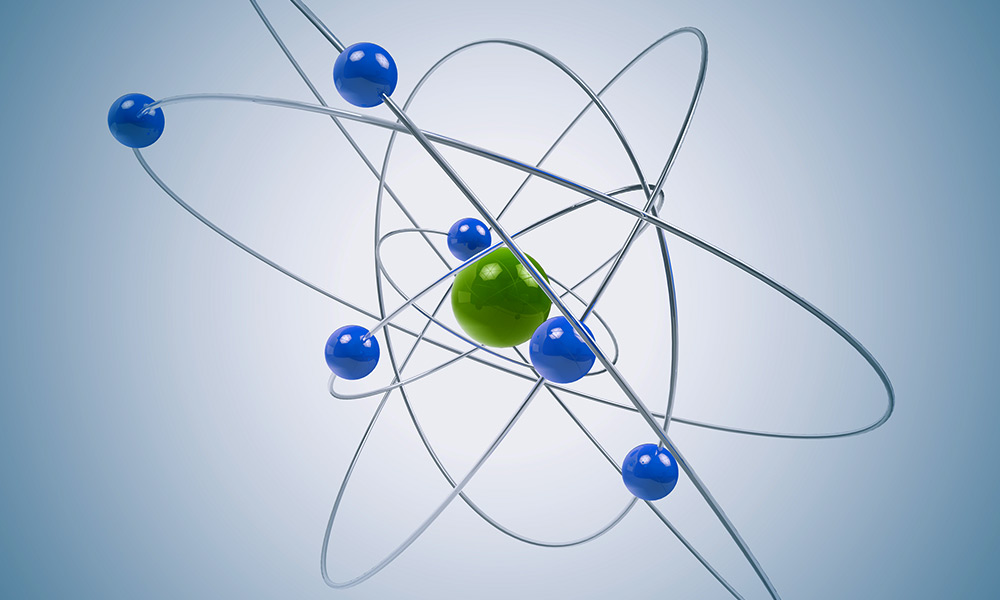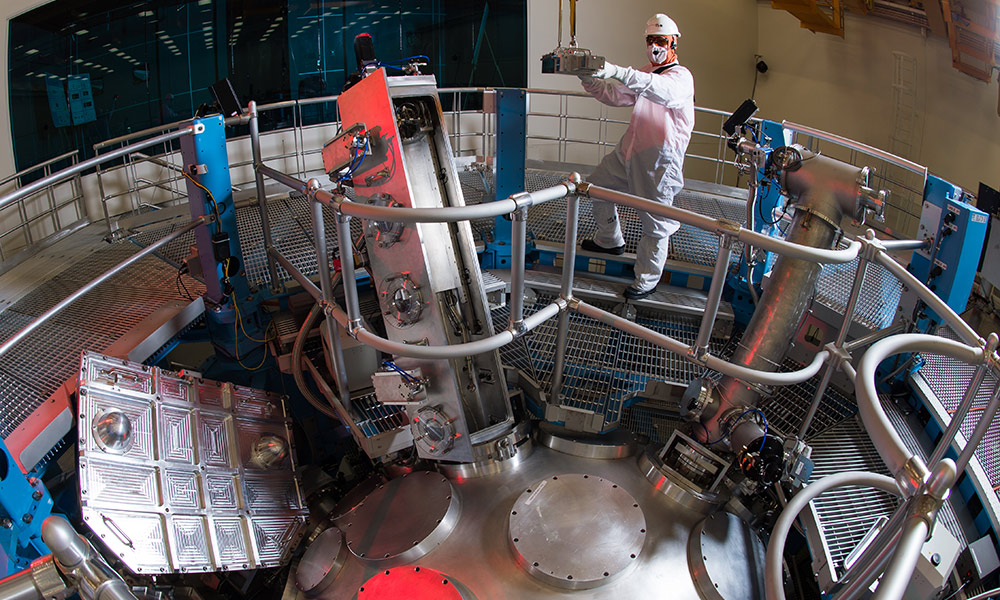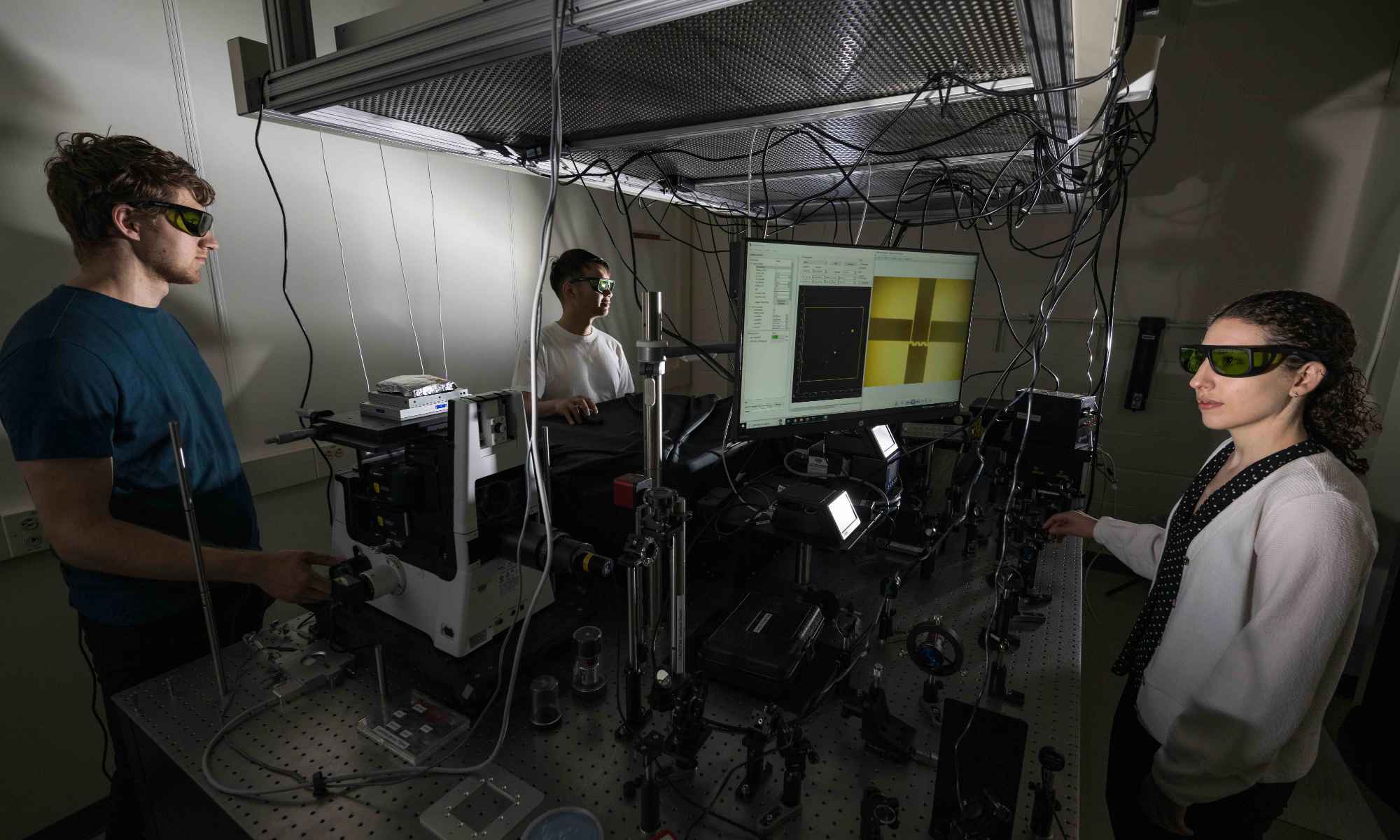NSF awards $13 million for multi-university initiative to explore ‘revolutionary states of matter.’
A new National Science Foundation (NSF) Physics Frontier Center, hosted at the University of Rochester—in collaboration with researchers at MIT, Princeton, the Universities of California at Berkeley and Davis, the University at Buffalo, and the Lawrence Livermore National Laboratory—will focus on understanding the physics and astrophysical implications of matter under pressures so high that the structure of individual atoms is disrupted.
The Center for Matter at Atomic Pressures (CMAP) will be funded with a five-year, $12.96 million award from the NSF.
The Physics Frontiers Centers (PFC) bring together some of the nation’s most highly regarded university-based centers funded by the NSF to enable transformational advances in the most promising research areas.
“The Physics Frontiers Centers program supports creative and interdisciplinary work at the frontiers of physics,” says Jean Cottam Allen, the NSF program officer overseeing the centers. “Researchers at the Center for Matter at Atomic Pressures are investigating a new frontier of matter at extreme pressures.”
This is the first major initiative from NSF in the field of high-energy-density science and follows several recent smaller grants and awards, including a previous investment in establishing the HADES facility for studies of matter under extreme pressures.
“This effort will help discover the nature of planets and stars throughout the universe, as well as the potential for new revolutionary states of matter here on Earth,” says principal investigator Gilbert (Rip) Collins, the Tracy Hyde Harris Professor of Mechanical Engineering, a professor of physics and astronomy, and associate director of science, technology, and academics at the Laboratory for Laser Energetics (LLE) at Rochester.
Leading a ‘paradigm shift’ in high-energy-density physics
Impetus for the project is two-fold, Collins says:
First is a recent “paradigm shift in how we think about extreme states of matter.” It was previously believed, for example, that materials subjected to very high, atomic-scale pressure, would transition to simple, densely packed metals. “However, recent theoretical and experimental results now suggest such extreme matter can become increasingly more complicated, with extraordinarily exotic properties,” Collins says. Aluminum, for example, may transform from a simple metal to a transparent insulator, hydrogen from a gas into a superconducting superfluid, and traditional hot conducting plasma to an insulating plasma.
Second is that thousands of planets, some of which may be platforms for life, have been discovered outside the solar system. To understand the nature of such massive bodies, researchers need to understand the planets’ deep interior states, which are under extreme pressures due to the crushing forces of gravity.
CMAP will lead discoveries at the confluence of two movements in science. Combining powerful lasers, pulsed-power, and X-ray beam technology with first-principles theory and astrophysical interpretation, the center will concentrate on four main areas of fundamental research:
- How hydrogen and helium behave at extraordinary densities in the so-called “gas giant” planets, including Jupiter and Saturn in our solar system. “This plays a key role in our understanding of how our solar system evolved,” Collins says.
- How other elements react at high densities, to understand the nature of terrestrial and water worlds in the universe, and how materials might be manipulated in laboratories on Earth to “harness revolutionary properties.”
- The pathways of energy transport that enable the dramatic change in properties and the energy balance of matter at extreme pressures. This will shed light on the evolution of planets and stars throughout the universe.
- The direct astrophysical implications of extreme matter properties—linking laboratory exploration of matter at atomic pressure with state-of-the-art models of astrophysical objects to better understand astronomical observations.
Project includes educational outreach in physics
The center also contains cutting-edge educational and outreach efforts.
“We’re going to bring our scientific results to people in a lot of innovative ways, including radio and web stories as well as video content,” says Adam Frank, a professor of physics and astronomy at Rochester who will lead outreach efforts. The educational outreach will focus on bringing high-energy-density science to students in a range of settings, from high schools to graduate schools.
“This effort will use modern computational and educational tools that teachers and student will also be able to leverage in other disciplines,” says Pierre Gourdain, an associate professor of physics at Rochester, a recent winner of the CAREER award from NSF, and leader of CMAP’s educational efforts.
Co-principal investigators are Sara Seager at MIT, Adam Burrows at Princeton, Raymond Jeanloz at Berkeley, and Sarah Stewart at Davis. Senior investigators in addition to Frank and Gourdain include Eva Zurek from Buffalo, Burkhard Militzer from Berkeley, Tom Duffy from Princeton, Jon Eggert, Rick Kraus, and Peter Cellers at Livermore, and at Rochester, Eric Blackman and Ryan Rygg of the Department of Physics and Astronomy; Suxing Hu, Mohamed Zaghoo, and Philip Nilson of the Laboratory for Laser Energetics; Jessica Shang and Hussein Aluie of the Department of Mechanical Engineering; and Miki Nakajima of the Department of Earth and Environmental Sciences. Collins, Hu, Rygg, and Zaghoo are also affiliated with the University’s Materials Science Program.
The University’s Institute for Matter at Extreme Energy Density (IMAXED), home to the High-Energy-Density (HED) Physics program, launched in 2017, has quickly become a leader in the field.
“Rip has been a force on our campus in leading efforts in high-energy-density physics. He has worked as a bridge between the LLE, the rest of our campus, and other institutions, and has put tireless effort into bringing people together to do things previously not done,” says Rob Clark, provost and senior vice president for research at Rochester. The CMAP project is an example. “I congratulate him and the team that he assembled to successfully leverage resources to address this exciting area of fundamental science.”
Congressional congratulations for new center
Members of the University’s Congressional delegation extended their congratulations as well.
“The NSF funding for the University of Rochester’s Center for Matter at Atomic Pressures ensures Rochester will help lead the country in the field of high energy density science,” US Senator Charles Schumer says. “Establishing this new center in Rochester will support local jobs and enable UR researchers to make discoveries in cutting-edge physics while bolstering our nation’s scientific workforce to keep the US as a global leader in new scientific advances. I am proud to deliver this funding that will keep the University of Rochester at the forefront of cutting-edge scientific innovation. This is a great day for the University of Rochester and the scientific community.”
Congressman Joe Morelle says, “The University of Rochester continues to lead the way in groundbreaking scientific research. This major award from the National Science Foundation is further proof of their excellence in innovation and world-class efforts in the in the field of high-energy-density physics. Congratulations to the entire University of Rochester team on this exciting opportunity to be at the forefront of pursuing a new scientific frontier.”
“The world-class scientists at the University of Rochester produce ground-breaking discoveries that help advance our knowledge of the sciences, and this new federal funding will allow the university to continue that important work,” says Senator Kirsten Gillibrand. “The Center for Matter at Atomic Pressures is a pioneer institution that will prepare university students for their future as leaders in the scientific workforce. I’m proud to announce this funding for the University of Rochester and I will always fight for the resources that New York State’s universities need to succeed.”

Astrophysicist Adam Frank
A self-described “evangelist of science,” Frank regularly writes and speaks about subjects like intelligent life forms in the universe, high-energy-density physics, space exploration and missions, climate change, and more.
Read more
 New initiative turns laser focus on high-energy-density physics
New initiative turns laser focus on high-energy-density physicsThe University of Rochester turns attention to the field of high-energy-density physics, an area the University is well poised to make major contributions.

Researchers turn liquid metal into a plasma
Researchers at the Laboratory for Laser Energetics are the first to turn a liquid metal into a plasma and to observe the temperature where a liquid under high-density conditions crosses over to a plasma state.

Rochester recognized as leader in high-energy-density physics
Of eight national projects in high-energy-density physics funded through the Department of Energy, three went to the University of Rochester.



